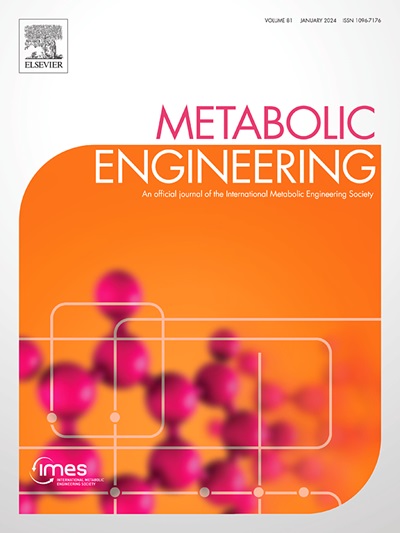Construction of an orthogonal transport system for Saccharomyces cerevisiae peroxisome to efficiently produce sesquiterpenes
Abstract
Subcellular compartmentalization is a crucial evolution characteristic of eukaryotic cells, providing inherent advantages for the construction of artificial biological systems to efficiently produce natural products. The establishment of an artificial protein transport system represents a pivotal initial step towards developing efficient artificial biological systems. Peroxisome has been demonstrated as a suitable subcellular compartment for the biosynthesis of terpenes in yeast. In this study, an artificial protein transporter ScPEX5* was firstly constructed by fusing the N-terminal sequence of PEX5 from S. cerevisiae and the C-terminal sequence of PEX5. Subsequently, an artificial protein transport system including the artificial signaling peptide YQSYY and its enhancing upstream 9 amino acid (9AA) residues along with ScPEX5* was demonstrated to exhibit orthogonality to the internal transport system of peroxisomes in S. cerevisiae. Furthermore, a library of 9AA residues was constructed and selected using high throughput pigment screening system to obtain an optimized signaling peptide (oPTS1*). Finally, the ScPEX5*-oPTS1* system was employed to construct yeast cell factories capable of producing the sesquiterpene α-humulene, resulting in an impressive α-humulene titer of 17.33 g/L and a productivity of 0.22 g/L/h achieved through fed-batch fermentation in a 5 L bioreactor. This research presents a valuable tool for the construction of artificial peroxisome cell factories and effective strategies for synthesizing other natural products in yeast.

 求助内容:
求助内容: 应助结果提醒方式:
应助结果提醒方式:


